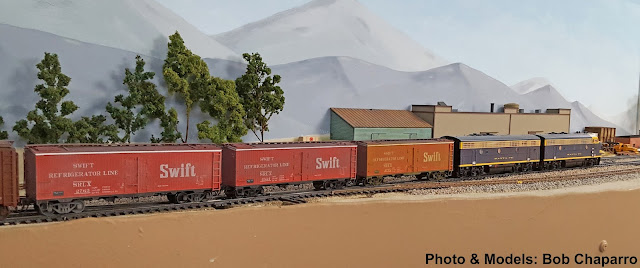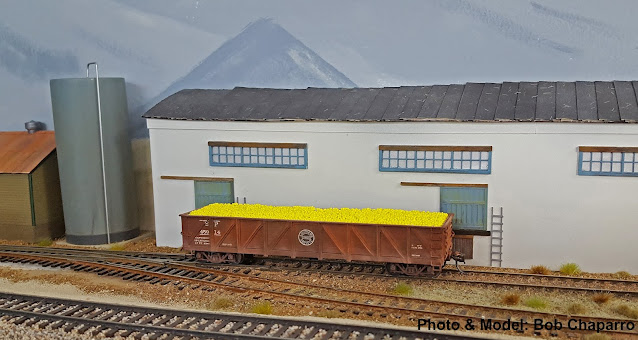Gondola With Scrap Steel Load Project
This is a Revell HO scale gondola I picked-up at the Whistle
Stop in Pasadena for $3.00. Fred’s price point was just too alluring to ignore.
This model dates to the mid-1950s so it’s just about as old as the six-transistor
radio I still own, but that’s another story.
By the standards of the day this was a pretty good model
when introduced, featuring a low center of gravity and free rolling sprung
trucks with metal frames. All details were cast on the body. But for my
purposes I replaced the sill steps with steps from A-Line and retired the
trucks as the flanges of the plastic wheels were a bit too deep and the trucks
had talgo-mounted couplers. My replacement trucks from Old Pullman had metal
wheels.
I installed a Kadee-compatible coupler mounted in a Kadee
coupler box. The coupler box was secured to the body with a screw.
I thought I needed a new brake wheel as I did not see one on
the car. Upon closer inspection I discovered the car had a simulated lever brake
wheel. These were found on prototype cars but I can’t think of any I have seen
on the several hundred freight cars from many manufacturers on my roster.
Something different yet still prototypical.
Now to the load. I cut up a large plastic drinking cup and
the plastic tops of takeout food containers to make scrap steel for the load.
The thin cross section of this plastic makes them idea as a starting point for prototype
scrap. The pieces are supposed to represent steel sheet cut from storage tanks
or ships. Truthfully, my pieces are a bit too large for this type of scrap going
to a steel mill for recycling. The pieces probably should be no larger than
four-feet by four feet, or thereabouts.
The pieces were painted with either red oxide or dark gray
automobile primer paints. Some of these pieces received a second coat of Rust-Oleum
Rustic Umber Multicolor Textured spray paint.
When dry each piece received a dusting of one of several
PanPastel rust and earth toned weathering media. The objective was to
differentiate the individual pieces so they did not all appear to be the same rusty
color. The pieces with the textured paint took on the appearance of heavily
rusted metal, further distinguishing the individual pieces.
I intended this to be a permanent load so the pieces were
glued into place with Canopy Glue, one layer at a time. They received further
dusting with various PanPastel media.
In terms of time and effort this was a simple load to
construct. And I received some satisfaction from being able to use such an old
model on my railroad.




